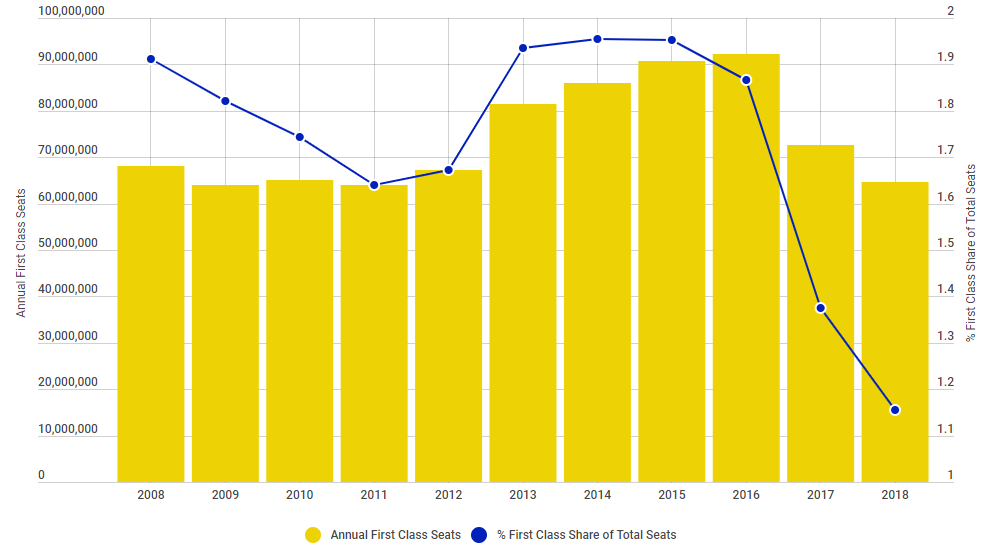Summary:
- Malaysia Airlines has transitioned its first class offering on itsA350 and A380 fleets into an enhanced business class, dubbed Business Suites;
- There are eight Business Suites on its A380s and four on its A350s and will be sold at "an attractive price point for passengers," says the Asian airline;
- They are available on routes between Kuala Lumpur and London, Tokyo and Osaka, as well as Sydney and Seoul during the current winter season.
It is clear that airlines are facing increasing pressure selling a first class product in today's marketplace. While, such an offer is sustainable in some markets, these have significantly reduced in number over the latest decade. Malaysia Airlines says the former first class on the two Airbus models will offer "an enhanced Business Class service at an attractive price point for passengers".
Known as Business Suites, It will maintain the former service proposition with dedicated check-in counters, access to the premium First Class Lounge, 50kg baggage allowance as well as an enhanced fine-dining experience onboard. It will be available on routes between Kuala Lumpur and London, Tokyo and Osaka and also on flights between the Malaysian capital and Sydney and Seoul during the current winter season.
"The new Business Suite was introduced in response to the growing demand of our guests. Our target is to enable the frequent flyer, looking for enhanced comfort, to now be able to enjoy a premium experience at competitive prices. We are confident that our new Business Suite will change the way people travel in business class," Captain Izham Ismail, CEO of the Malaysia Airlines Group.
On the A380 the Business Suites are located on the main deck with eight suites (four individual seats and two double seats) configured in a 1-2-1 seat formation. They offer a seat pitch of 89 inches and bed width of 40 inches and extend to a full flat-bed length of 87 inches. Each has an individual 23-inch IFE screen with widescreen aspect ratio of 16:9 and comes with its personal closet and stowage for coat, luggage, laptop and personal belongings.
On the A350 it is a smaller four suite (two individual seats and one double seat) offer with one row in 1-2-1 seat formation, all providing direct aisle access. Each has a seat pitch of 83 inches and width of 23 inches, a full-flat bed length of 83 inches and comes with a retractable privacy door.
There is an Individual 24-inch IFE with touchscreen and multi-touch gesture, video handset, widescreen, High-Definition clarity (1080p) with LED backlighting. Each suite also comes with meal and cocktail table, feature light, vanity mirror, console stowage and magazine rack and has seat control offering personalised lounge position, independent adjustable leg rest, and massage and lumbar system.
Apart from the new name, it appears that nothing else has changed, except the price. Malaysia Airlines confirms that the Business Suites are being sold at a price point below the previous first class offer. This, it hopes, will enable it to boost occupancy levels, while enabling it to build additional loyalty for its frequent travellers. It will also open the cabin to additional corporate customers that may be restricted from purchasing first class tickets. In comparison with other first class products, some had described the Malaysia Airlines offer as purely a glorified business class so it might now be pitched at its right market.
The Blue Swan Daily analysis of OAG schedule data shows that the number of global first class seats has declined for a second successive year to the second lowest level this decade. From peaking in 2015, levels subsequently declined by more than a fifth (-20.4%) in 2017 and fell a further -11.0% in 2018. As a percentage of total capacity in what is an expanding global business, first class seats have shrunk from a 2.0% share in 2014 and 2015 to just a 1.2% share in 2018.
The first class seat totals are dominated by the US and Chinese domestic markets and on a global basis domestic flights account for 87.2% of the total first class seats being provided this year. But, the annual decline is apparent in both domestic skies (-7.0% year-on-year in 2018), and more obvious on international flights (-30.1%).
CHART - As a percentage of total capacity in what is an expanding global business, first class seats have shrunk from an almost 2.0% share from 2013 to 2015 to less than a 1.2% share in 2018 Source: The Blue Swan Daily and OAG
Source: The Blue Swan Daily and OAG
